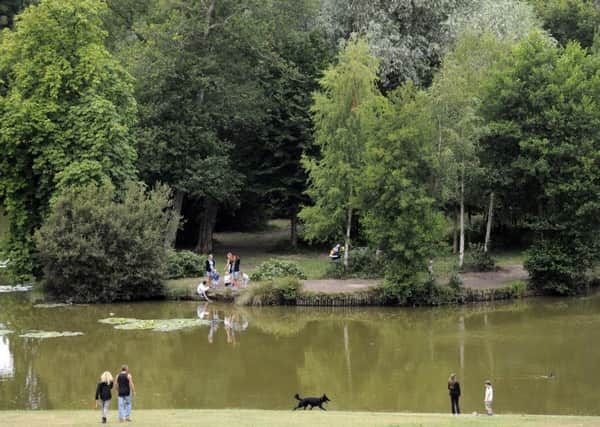Staunton Country Park is on course for £4m revamp


Staunton Country Park, in Havant, has received lottery funding of around £122,000 – a cash pot that will be used to develop detailed plans for a £2.85m lottery bid.
If successful, it will form part of a project which will invest more than £4m in restoration of the historic estate ahead of Staunton’s bicentenary in 2019.
The work across parts of the 476-acre site will include:
Advertisement
Hide AdAdvertisement
Hide Adn Restoring the Grade II*-registered landscape, including Storey Gardens, the Lake, and network of trails.
n Renovating follies such as the Beacon temple, Shell House, Fort and Chinese Bridge.
n Transformation of the historic Victorian Coach House into a visitor centre providing information, orientation and interpretation.
n Conversion of an estate workers’ cottage into toilets.
n Construction of a small café with seating, overlooking the lake.
Advertisement
Hide AdAdvertisement
Hide Adn A new training base for volunteers, including the Beacon Community Partnership.
n Car park improvements.
The park is owned by Hampshire County Council.
Staunton’s ornamental farm and gardens to the south of the country park are not included in the project, but they will benefit from a county council modernisation programme.
Councillor Andrew Gibson, who oversees the council’s parks, said: ‘Staunton Country Park has a rich heritage and it’s exciting to hear that the Regency character of the landscapes, follies and buildings will be revitalised for people of all ages to enjoy.
‘Volunteers and learners will be placed at the heart of the park, with improved access and new visitor facilities which will provide a welcome boost to the local economy.’
Advertisement
Hide AdAdvertisement
Hide AdSir George Staunton bought the estate because he had come out of working for the East Indian Trading Company and wanted to go into politics.
To do that he needed to have some status, so he bought the rural estate to the north of Havant in 1819 to prove he was wealthy.
The keen botanist dug the lake, which took 10 years to finish, and built a variety of follies based on his travels.